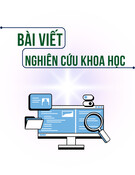
© 2008 Pearson Prentice Hall, Electronic Commerce 2008, Efraim Turban, et al.
Chapter 11
E-Commerce Security

11-2
Learning Objectives
1. Explain EC-related crimes and why
they cannot be stopped.
2. Describe an EC security strategy and
why a life cycle approach is needed.
3. Describe the information assurance
security principles.
4. Describe EC security issues from the
perspective of customers and e-
businesses.

11-3
Learning Objectives
5. Identify the major EC security threats,
vulnerabilities, and risk.
6. Identify and describe common EC threats
and attacks.
7. Identify and assess major technologies and
methods for securing EC communications.
8. Identify and assess major technologies for
information assurance and protection of EC
networks.

11-4
Stopping E-Commerce Crimes
Information assurance (IA)
The protection of information systems against
unauthorized access to or modification of
information whether in storage, processing or
transit, and against the denial of service to
authorized users, including those measures
necessary to detect, document, and counter
such threats
human firewalls
Methods that filter or limit people’s access to
critical business documents

11-5
Stopping E-Commerce Crimes
zombies
Computers infected with malware that are under the
control of a spammer, hacker, or other criminal
application firewalls
Specialized tools designed to increase the security of
Web applications
common (security) vulnerabilities and exposures
(CVE)
Publicly known computer security risks, which are
collected, listed, and shared by a board of security-
related organizations (cve.mitre.org)


























